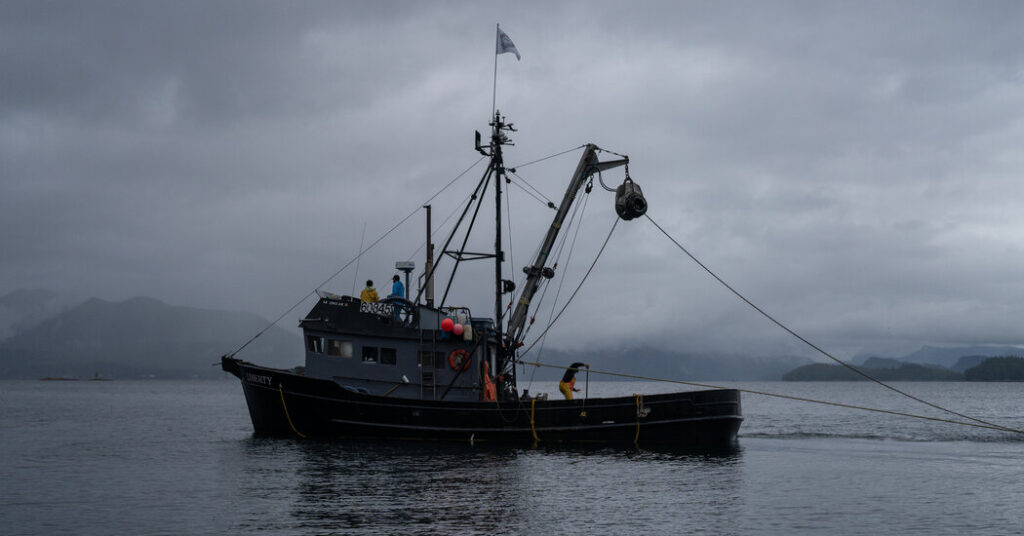
Alaskan Livelihood In the vast, rugged landscape of Alaska, generations of families have thrived, relying on the natural bounty that this remote region offers. However, the livelihoods that have sustained Alaskans for centuries are now under unprecedented threat. The convergence of climate change, economic pressures, and environmental degradation is reshaping the very foundation of life in this northern frontier.
Alaskan Livelihood The Impact of Climate Change on Traditional Lifestyles
Alaska’s indigenous communities and long-time residents have traditionally depended on subsistence hunting, fishing, and gathering. These activities are not only vital for food and resources but also deeply embedded in their cultural identity. Yet, climate change is rapidly altering the environment, making these practices increasingly difficult.
Rising temperatures are causing glaciers to melt and sea levels to rise, disrupting the habitats of key species such as salmon, caribou, and seals. These animals are not only crucial for sustenance but also for trade and cultural practices. Additionally, unpredictable weather patterns and shrinking ice cover are making it more dangerous for hunters to navigate the land and sea.
For instance, the once-predictable migration patterns of caribou are shifting, forcing hunters to travel further and take greater risks to provide for their families. The thinning ice also endangers those who rely on it for winter travel and fishing, leading to accidents and loss of life. These changes are forcing communities to adapt rapidly, often with limited resources, and threatening their ability to maintain their traditional ways of life.
Economic Pressures and Environmental Exploitation
Beyond the environmental changes, Alaska’s economy is heavily dependent on industries like oil, gas, and mining. While these sectors provide jobs and revenue, they also pose significant threats to the environment and traditional livelihoods. The extraction and transportation of fossil fuels have led to spills and pollution, contaminating the waters and lands that Alaskans depend on.
Furthermore, the push for more resource extraction is often at odds with the preservation of natural habitats. As demand for energy and minerals grows, the pressure to open up more land for exploration increases, often at the expense of indigenous communities and local wildlife. This exploitation can lead to long-term damage to ecosystems, making it even harder for future generations to sustain themselves.
The economic benefits of these industries are also unevenly distributed, often leaving rural and indigenous communities with little to no financial gain while bearing the brunt of the environmental consequences. This disparity exacerbates existing social and economic inequalities, making it even more challenging for these communities to adapt to the changing landscape.
The Fight for Conservation and Sustainable Development
In response to these threats, many Alaskan Livelihood are advocating for conservation and sustainable development practices. Efforts to protect critical habitats, regulate industrial activities, and promote renewable energy are gaining momentum. Local leaders and organizations are working to strike a balance between economic development and environmental preservation, ensuring that future generations can continue to thrive in Alaska’s unique environment. NYTIMES
One example of this is the growing movement to protect the Arctic National Wildlife Refuge (ANWR) from oil drilling. This vast, pristine area is home to a diverse array of wildlife and is culturally significant to the indigenous Gwich’in people, who rely on the caribou that migrate through the region. Despite the economic incentives to drill for oil, many Alaskan Livelihood recognize the long-term importance of preserving this land for future generations.
There is also a push towards developing renewable energy sources, such as wind and solar, to reduce dependence on fossil fuels and mitigate the impact of climate change. These initiatives not only help protect the environment but also create new economic opportunities for Alaskan Livelihood in the green energy sector.
Antonio Maracas
Como escritor, minha paixão é transformar ideias em palavras que ressoam com os leitores.
